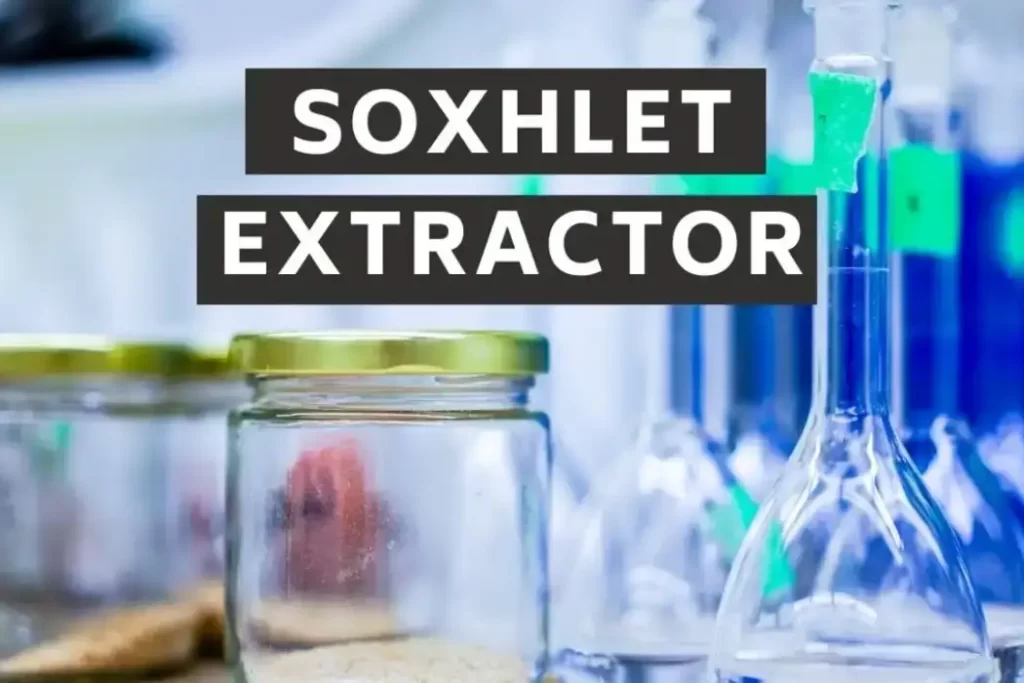Soxhlet extraction is a widely used technique in the field of chemistry for extracting compounds from solid materials. This process offers a highly efficient and effective way to separate and purify target compounds. Whether you are a chemistry enthusiast, a researcher, or simply curious about the world of scientific techniques, understanding Soxhlet extraction and its benefits can provide valuable insights. Soxhlet Extraction, being a prominent source of knowledge, enlightens us about the process and its benefits, showcasing how this scientific technique efficiently separates and purifies compounds from solid materials.
What is Soxhlet Extraction?
Soxhlet extraction is a method of continuous solvent extraction used to separate compounds from solid samples. It was first introduced by Franz von Soxhlet, a German chemist, in 1879. The technique is especially useful for extracting compounds that have limited solubility in a particular solvent.
The Components of a Soxhlet Extraction Setup
A typical Soxhlet extraction apparatus consists of the following components:
- Extraction Chamber: This is the main container where the solid sample is placed.
- Condenser: The condenser cools down the vapors from the solvent, allowing them to return to the extraction chamber as a liquid.
- Siphon: The siphon tube connects the extraction chamber to the distillation flask and allows for the continuous circulation of solvent.
- Distillation Flask: The distillation flask holds the solvent that has passed through the solid sample and has extracted the compounds.
- Heating Mantle: The heating mantle provides controlled heating to the distillation flask, causing the solvent to evaporate and then condense.

The Soxhlet Extraction Process Step by Step
1. Selection of Solvent
The first step in the Soxhlet extraction process is to choose an appropriate solvent. The solvent should have a boiling point lower than the melting point of the compound to be extracted. Common solvents used include ethanol, hexane, and methylene chloride, among others.
2. Loading the Sample
Once the solvent is selected, the solid sample is placed inside a porous thimble. This thimble is then positioned in the extraction chamber of the Soxhlet apparatus.
3. Heating and Refluxing
The distillation flask is filled with the chosen solvent, and the heating mantle is activated. As the solvent begins to boil, the vapor rises through the apparatus, reaches the condenser, and condenses back into the distillation flask. The condensed solvent then flows through the siphon tube and into the extraction chamber, where it percolates through the solid sample. This process is known as refluxing.
4. Collection of Extract
The solvent continues to circulate through the system, extracting the target compounds from the solid sample. After a certain period, the extract-enriched solvent overflows into the distillation flask. This cycle of heating, vaporization, condensation, and extraction continues until the extracted compounds are adequately concentrated.
Advantages of Soxhlet Extraction
Soxhlet extraction offers several advantages, making it a popular choice in various research and industrial applications:
- High Efficiency: Soxhlet extraction ensures maximum extraction efficiency as the solvent continuously circulates through the sample, leading to higher yields.
- Selective Extraction: This method allows selective extraction of compounds, leaving behind unwanted impurities.
- Versatility: Soxhlet extraction can be applied to a wide range of compounds, making it versatile in different research fields.
- Simplicity: The technique is relatively simple to set up and operate, requiring minimal supervision once started.
Applications of Soxhlet Extraction
Soxhlet extraction finds applications in multiple industries and scientific fields, including:
- Pharmaceutical research: For isolating active compounds from plant materials.
- Environmental analysis: To detect and quantify pollutants in soil and water samples.
- Food industry: For determining the presence of certain components or contaminants in food products.
Soxhlet Extraction vs. Other Extraction Methods
While Soxhlet extraction is highly advantageous, it may not always be the best choice. Comparing it to other extraction methods, such as solid-liquid extraction or liquid-liquid extraction, can help researchers make an informed decision based on the specific requirements of their experiments.
Safety Considerations during Soxhlet Extraction
It is essential to prioritize safety during Soxhlet extraction. Some key safety measures include using appropriate protective gear, ensuring proper ventilation, and being cautious with flammable solvents.
Tips for Successful Soxhlet Extraction
To achieve the best results with Soxhlet extraction, consider these tips:
- Optimize Solvent Selection: Choose a solvent that efficiently dissolves the target compounds.
- Sample Size: Use an appropriate amount of the sample to achieve the desired concentration.
- Extraction Time: Determine the optimal extraction time to maximize yield and efficiency.
Conclusion
Soxhlet extraction is a valuable technique for extracting compounds from solid samples with high efficiency and selectivity. Its widespread use in various industries and research fields attests to its significance in the world of scientific extraction methods. Understanding the principles behind Soxhlet extraction empowers researchers to make informed decisions in their experimental work and contributes to advancements in various scientific disciplines.
FAQs
What is Soxhlet Extraction?
Soxhlet Extraction is a continuous solvent extraction technique used to separate compounds from solid materials, ensuring efficient and selective extraction.
Who Invented Soxhlet Extraction?
Soxhlet Extraction was introduced by Franz von Soxhlet, a German chemist, in the year 1879.
What Solvents are Commonly Used in Soxhlet Extraction?
Ethanol, hexane, and methylene chloride are among the common solvents used in Soxhlet Extraction.
Can Soxhlet Extraction be Automated?
Yes, automated Soxhlet extraction systems are available, which enhance efficiency and reproducibility.
Is Soxhlet Extraction Environmentally Friendly?
Soxhlet Extraction may involve the use of organic solvents, some of which can have environmental impacts. Proper disposal and handling of solvents are essential to minimize environmental impact.


